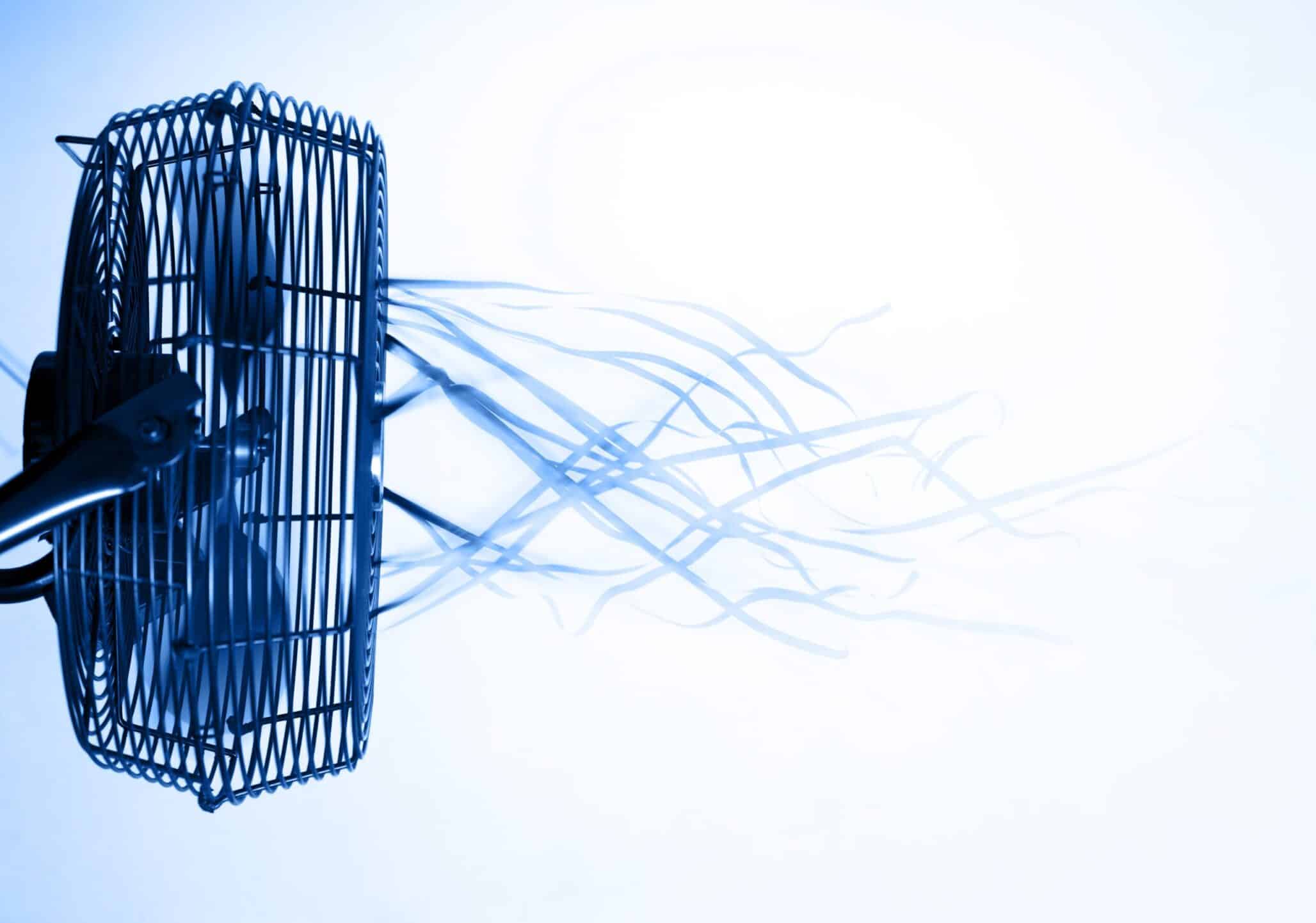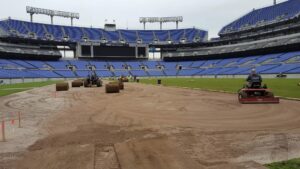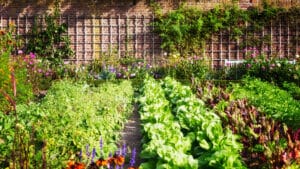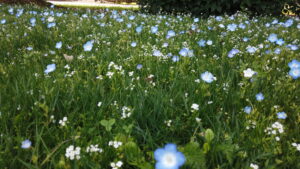New greenspace plant varieties are key to keeping urban spaces livable.
Cities have always held heat more than non-urban spaces, but they’re heating up especially fast in our new changing climate reality.
Urban heat islands (UHI) are created by large expanses of concrete, pavement, buildings and other surfaces that absorb and retain more heat than natural land cover. According to the World Health Organization, inland cities can experience temperatures three to five degrees Celsius (5.4 – 9 degrees Fahrenheit) higher than surrounding plant-covered areas. The United States Environmental Protection Agency found a much bigger difference, stating daytime surface temperatures can differ in developed versus natural areas by as much as 27°F. With climate change exacerbating an already significant problem of excessive heat in urban centers, cities must work to break up these concrete jungles with green spaces. The seed industry has an important role to play.
“I think we’re going to see a lot more science involving ‘thermal comfort,’ and how we can utilize turfgrass and other urban vegetation to mitigate some of these heat events by ‘re-greening’ cities,” says Michael Barnes, researcher and lecturer at the University of Minnesota. “The simple answer is always ‘plant more trees’ but that’s not entirely the solution. It’s an ‘and,’ not an ‘or’. The goal is to plant more climate-ready trees and turf and other vegetation.”
Adding green space to cities adds to quality of life in many ways: providing improved water filtration and drainage, increasing oxygen production, reducing carbon dioxide and improving air quality by trapping dust and other airborne particles.
“The fastest, most effective and most affordable way to do this is to sow more grass,” says Jan van den Boom, turf sales lead for Barenbrug Holland.
Breeding for extremes
Successful urban plantings require careful consideration and expert knowledge on selecting seeds that will thrive in conditions that are often extremely unfavorable.
“Improved cultivars and genetics in all species will allow turf to tolerate stresses and require less inputs,” says Leah A. Brilman, director of turf products and technical services for DLF.
While plantings are designed to mitigate rising temperatures, they first have to themselves survive the high heat.

“A lot of cool season grasses stop growing when temperatures reach higher than 25 or 30°C [77-86°F]. It is our goal to have grasses that keep growing into 35°C,” van den Boom says.
Warm seasons grasses can withstand higher temperatures but go into winter rest when temperatures drop below 60°F.
“Due to climate change, we see that we are using warm-season grasses in more and more places,” van den Boom says.
Sunlight is another main concern.
“Fine fescues perform well for low maintenance either mown infrequently or unmown, sun or shade,” Brilman says, while seeded Bermuda grasses can do an excellent job for green spaces in the transition zone and south, as long as they receive adequate sunlight.
“Low water use and high heat tolerance make them excellent for small areas exposed to heat and for parks and sports fields,” she says.
Low maintenance matters
Both homeowners and city planners focus on selecting seeds that will provide low maintenance growth.
“We really need to focus on identifying and developing drought tolerant grasses,” says Eric Watkins, professor in the Department of Horticultural Science at the University of Minnesota.
Aesthetically, drought tolerance allows grasses to stay greener longer, but reducing or removing the need for irrigation adds sustainability.

“One approach to drought tolerance is to find grasses that go dormant but stay alive [in dry conditions]. Then they green back up when the water comes back,” says Trent Tate, plant breeder for Oregon-based GO Seed.
Even the United States Golf Association (USGA) attempted to shift mindsets with their “brown is the new green” effort from several years ago.
“Specifically, Kentucky bluegrasses can have great wear tolerance and can recover from rhizomes if subjected to long term drought,” Brilman says.
Breeders also select for slower growing varieties.
“Lower leaf production makes these grasses more sustainable because less mowing means less petrol used,” van den Boom says.
Selecting for success
Breeders must rely on extensive testing in a variety of locations. In the U.S. and Canada, the National Turfgrass Evaluation Program (NTEP) evaluates turfgrass varieties on overall quality, color, texture, density, seedling vigor, drought tolerance, traffic tolerance, spring green-up and disease or insect damage, among other categories.
Tate says participating in these tests is a big investment, but the data gained is invaluable.
“In general, you want to see how each variety stands up on its own. Then you can take the strongest varieties and blend them together to make a blend that is even stronger,” Tate says. “As a plant breeder, I want the best variety that has all the good traits, but it’s a bit like herding cats, trying to balance everything all at once, so blending helps. It creates a mixture that does better than the individual varieties alone.”
Better with blends
With poor and compacted soils, excessive heat and salt, as well as a lack of irrigation, roadsides serve as a good test case for high stress urban plantings.
“We’ve done a number of studies on roadside grasses for Minnesota and have found that multi-species mixtures provide the best overall performance: the more species, the better the turf stand,” Watkins says.
It’s crucial to select a blend with carefully considered proportions.

For example, perennial ryegrasses are added to many blends for their quick establishment and superior wear tolerance. However, in northern states with cold winters, perennial ryegrass can suffer significant damage from winter stresses, so having it in a mixture at levels greater than 10% can reduce the quality of a turf stand. Tall fescue and slender creeping red fescue, two other quick to establish species, reduce the establishment of hard fescue, Kentucky bluegrass, and buffalograss, which are all slower establishing species.
Blends are also popular for their appearance and sustainability characteristics.
“Ten to 20 years ago, everyone wanted grass that was all the same, like a carpet, but now more and more, having flowers mixed into a grass field is becoming the new generation of lawns,” van den Boom says.
These mixes allow for better pollinator habitat and even improved efficiency and sustainability.
“Clovers are able to fix nitrogen from the air, so including them in the blend reduces the need for synthetic nitrogen applications, which creates a more self-sustaining system. Those types of research elements are really important to us and are being utilized more and more to improve efficiency,” Tate says.
“The challenge will be getting people to try alternatives outside the conventional lawn, as well as getting people to accept plants other than turfgrass as acceptable lawn species,” says Alec Kowalewski, Turfgrass Specialist and Associate Professor for Oregon State University. “Stakeholders producing clover should do more work to market this product to the homeowner and municipality managers.”
Biodiversity benefits
Green spaces that include native plantings also help increase biodiversity.
According to the National Forest Service, more than 80% of the U.S. population lives in urban areas. Between 2010 and 2060, total urban and developed land area is projected to increase by 39 to 69 million acres. To balance increasing urbanization, cities need to be creative about how to fund the creation and preservation of green spaces.

“Federal, state and local leaders need to understand the critical importance of green spaces, especially biologically diverse spaces that are not just turf grass,” says Diana Colangelo, senior program manager at City Parks Alliance, headquartered in Washington D.C.
Seed companies can work with cities to determine which native plants will be best suited to more extreme climate conditions in the future and encourage diversity of plantings to increase resilience.
Food forests are another unique way some cities are reclaiming green spaces. Unlike community gardens, urban farms, or street trees on their own, these areas are designed to mimic natural ecosystems, which maximizes their ecological benefits while also feeding people.
“Food forests are an amazing way to engage the community and deal with food deserts and inequitable access to fresh food, while increasing habitat and mitigating heat and other climate issues. A neighborhood of Tucson has had a food forest for 30 years. It’s as much as 38 degrees cooler there in the shade on hot days than other areas of the city,” Colangelo says.
Problematic policies
To combat droughts and water shortages, many cities have created programs incentivizing turfgrass removal. However, these policies run counter to recent research.
“You lose a lot of benefits,” Tate says. “Heating and AC bills go up. Water infiltration and erosion increase.”
Perhaps more alarming is the urban heat island effect.
“We know that greenspace helps to alleviate urban heat island effects, so the question remains of what impact turf removal programs will have on urban heat,” Barnes says.
It’s a question that could reshape government programs and lead to significant environmental impacts, especially if research continues to support seed solutions that thrive in extreme urban conditions.
“If we had some more data about the potential implications on urban heat, we might steer individuals towards the adoption of lower input varieties compared to outright removal,” Barnes says.

Creative greening
While parks and roadsides can be reclaimed as urban green space, cities must continue to find intentional and widespread opportunities for more green space, especially as urban populations expand.
Van den Boom suggests starting with parking lots, which can be paved with places for grass using seed mixtures that can grow and germinate in areas that are a mixture of 50% grass and stone.
“Not a lot of people have a lot of knowledge about grass,” van den Boom says. “We have grass species with roots that grow one meter into the ground and others that grow only 5 cm. When you know the soil and other conditions you’re working with, you can choose the right grass.”
Other creative solutions include developing purple, red, or other colored turf grasses, opening the possibility for natural separations for airports, roadsides and athletic applications.
Architects, urban planners and seed suppliers must start looking outside traditional turf applications.
“Living walls and green roots are part of the future of green space,” Kowalewski says, and slow growing plants are critical in those applications as well.
If green (or purple, red and other colors) take over more urban space, cities may slowly start to see the temperature gauge drop back down, even slightly.
“Plants are amazing things. We want to find ways to use more of them,” Tate says. “Every little bit adds up. Any greenspace you have the ability to maintain is worth adding.”













